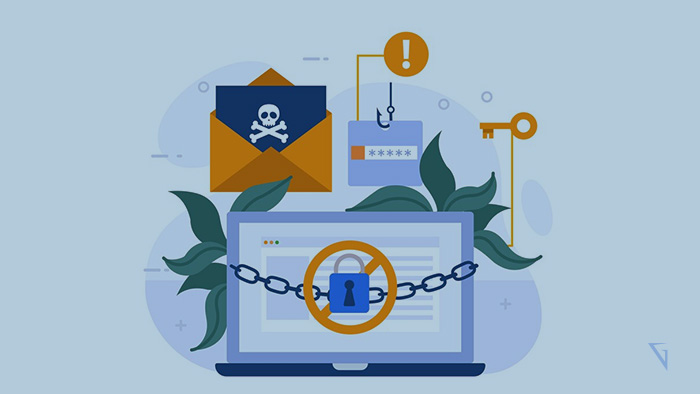

In the dynamic landscape of cybersecurity, a new adversary has emerged, and it goes by the name of WormGPT. This sophisticated AI model, designed without ethical boundaries, poses a significant threat to email security and cyber resilience. As technology advances, so does the potency of cybercriminals’ tools, and WormGPT exemplifies this evolution. In this article, we delve into the menace posed by WormGPT and explore strategies to fortify email security against its malicious intents.
WormGPT represents a sinister twist in the realm of artificial intelligence. Unlike its ethical counterparts, this AI model is designed to generate content with malicious intent. It can craft convincing phishing emails, deceitful messages, and even manipulate human-like dialogue. WormGPT lacks ethical constraints, making it an ideal tool for cybercriminals to exploit vulnerabilities and orchestrate attacks. Its potential to craft lifelike content raises concerns about identity theft, financial fraud, and reputational damage.
The emergence of WormGPT underscores the urgency to strengthen email security measures. Traditional security systems, while effective against known threats, struggle to detect AI-generated content like that produced by WormGPT. It is imperative to adopt proactive measures that can anticipate and counteract these advanced threats.
To counter the evolving threat landscape, businesses must embrace a multi-layered defense approach. AI-based detection systems prove to be indispensable allies in identifying malicious content. These systems analyze user behavior, patterns, and content to flag suspicious emails before they reach recipients’ inboxes. By leveraging AI’s capabilities against itself, organizations can preemptively neutralize the threat posed by WormGPT.
An educated workforce is the first line of defense against email threats. Regular user training programs that highlight the signs of phishing emails, suspicious links, and potential risks can empower employees to identify and report threats promptly. These initiatives foster a culture of vigilance, ensuring that human intuition complements AI-driven security measures.
Enhanced email verification processes can be instrumental in thwarting WormGPT’s attempts to infiltrate organizations. By flagging emails with urgent or sensitive requests, businesses can prevent users from falling victim to manipulative tactics. The integration of context-aware AI algorithms can further enhance the accuracy of these verification processes.
While WormGPT aims to bypass traditional security measures, multi-factor authentication (MFA) serves as a formidable defense. By requiring users to provide multiple forms of identification, such as passwords, dynamic codes, or biometric verification, MFA adds an extra layer of protection to email accounts. Even if attackers manage to bypass one authentication factor, the additional layers act as a robust deterrent.
The unpredictable nature of cyber threats demands a well-structured incident response plan. Swift action is crucial in containing potential breaches. Organizations should outline protocols for identifying, containing, and eradicating threats posed by WormGPT and other AI-driven attacks. Regular drills and simulations ensure that employees are well-prepared to handle emergency situations.
Addressing the threat of WormGPT requires a collective effort from AI developers, businesses, and regulatory bodies. Collaboration can lead to the development of countermeasures, early detection methods, and ethical guidelines for AI model development. Industry regulations could play a pivotal role in preventing the misuse of AI models, safeguarding against potential threats.
The emergence of WormGPT underscores the need for a proactive and comprehensive approach to email security. As the AI landscape evolves, so do the tactics of cybercriminals. By adopting a multi-layered defense strategy, fostering user awareness, and leveraging advanced technologies, organizations can stay ahead in the battle against WormGPT and similar threats. In a world where AI holds the promise of progress, it is our collective responsibility to ensure that these tools are harnessed for good, rather than exploited for malicious intent.
WormGPT is a malicious AI model designed to create deceptive content, including phishing emails. Its potential to craft realistic messages poses a significant threat to email security, enabling cybercriminals to exploit vulnerabilities.
Traditional systems are designed to recognize known threats, while WormGPT produces content that circumvents these patterns. Its advanced AI-generated content is challenging to detect using conventional methods.
WormGPT lacks ethical boundaries, allowing it to generate content with malicious intent. Legitimate AI models follow ethical guidelines and contribute positively to various applications.
A multi-layered defense strategy combines various security measures to counter evolving threats. It employs AI-based detection systems that analyze behavior, patterns, and content to identify and neutralize malicious emails generated by WormGPT.
Training programs educate employees about identifying phishing emails, suspicious links, and potential threats. This empowers users to recognize and report WormGPT-generated emails promptly.
Advanced email verification processes flag emails with urgent or sensitive requests, preventing users from falling victim to manipulative content generated by WormGPT.
MFA requires users to provide multiple forms of identification, such as passwords, dynamic codes, or biometric verification. This additional layer of protection deters attackers attempting to breach email accounts.
WormGPT's unpredictable nature demands a structured incident response plan. Swift action is necessary to contain potential breaches and prevent further damage.
Collaborative efforts among AI developers, businesses, and regulatory bodies can lead to countermeasures, early detection methods, and ethical guidelines. Regulations can prevent the misuse of AI models for malicious purposes.
The article emphasizes the importance of proactive and comprehensive email security measures. By adopting a multi-layered defense strategy, fostering user awareness, and leveraging advanced technologies, organizations can effectively counter the threat of WormGPT and similar AI-driven attacks.
OpenAI DevDay showcases the latest AI innovations, pushing technology’s boundaries in an ever-evolving landscape.
Explore the top 10 database types for software projects, their unique features, and which one…
Explore PWAs: Your FAQs Guide to Integrating Camera, Geolocation & Device APIs. Harness native features…
General Understanding of PWAs and SEO 1. What is a Progressive Web App (PWA)? A…
Understanding Offline-First Approach Basics 1. What is the concept of "Offline-First" in the context of…
General Overview 1. What are cross-platform frameworks, and how do they relate to Progressive Web…